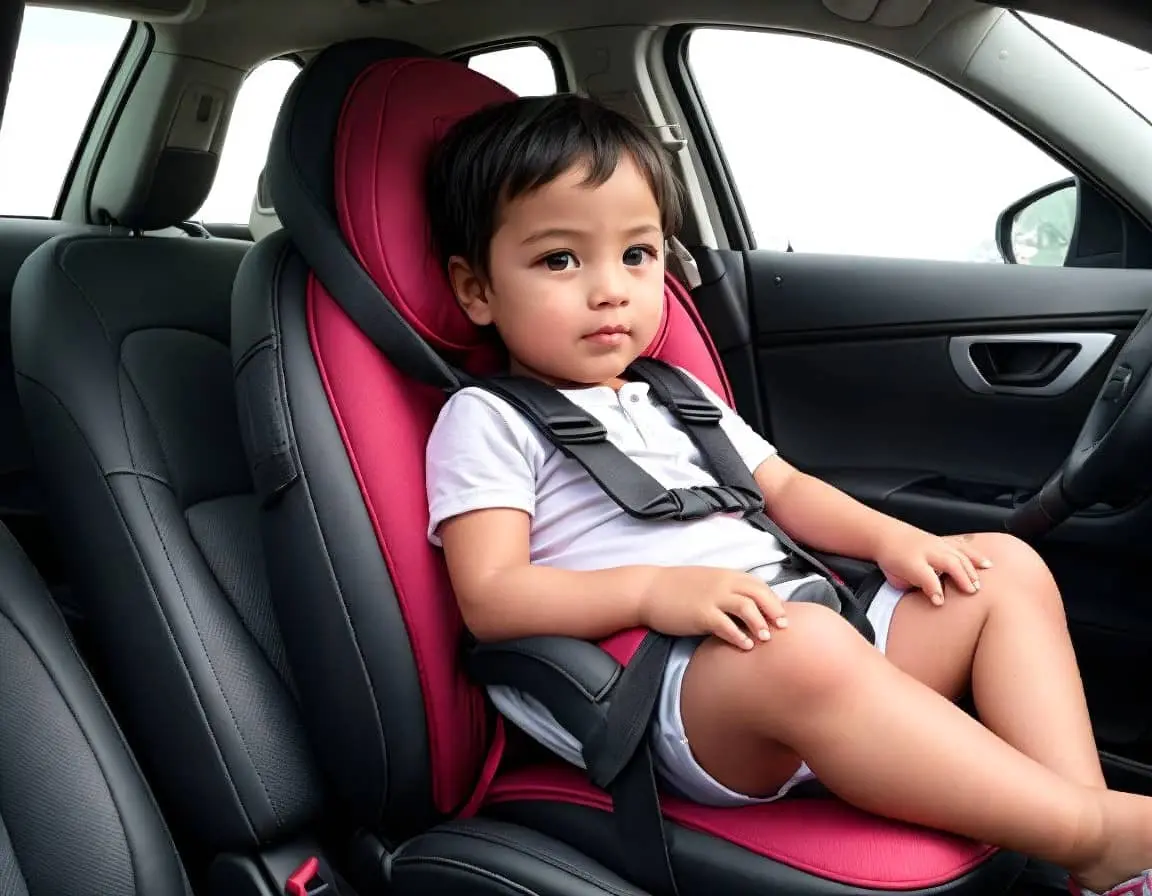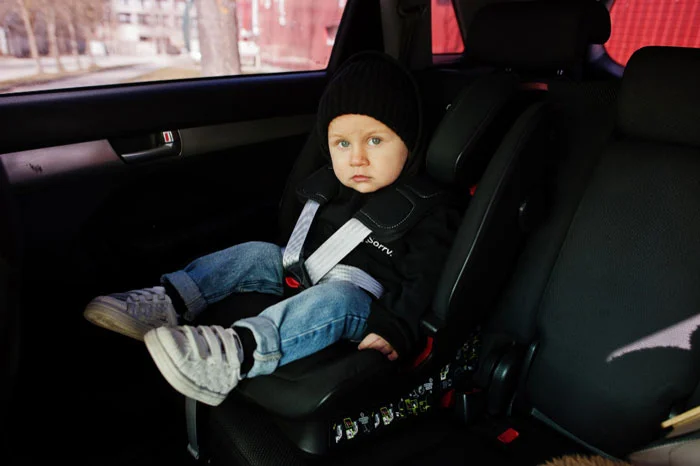Child Car Seat Rules in Qatar: Ensuring Safety for Young Passengers

Qatar, a rapidly developing nation with a strong focus on modernization, has made significant strides in improving road safety. However, child passenger safety remains an area of concern, with low adoption rates of child restraint systems (CRSs) despite their proven effectiveness in reducing injuries and fatalities. This article provides a comprehensive overview of child car seat rules in Qatar, covering legal requirements, safety recommendations, enforcement practices, and practical advice for parents and visitors to ensure the safety of young passengers on Qatar’s roads.
Legal Framework for Child Car Seats in Qatar
Qatar’s traffic laws, governed by the Ministry of Interior and enforced by the General Directorate of Traffic, include specific provisions for child passenger safety. A key regulation, outlined in Clause No. 3 of Article 55 of Traffic Law No. 19, prohibits children under 10 years old from sitting in the front passenger seat of a vehicle while it is in motion. This rule, established to protect young passengers from the risks associated with front-seat travel, such as airbag deployment injuries, applies to all private vehicles, including taxis and ride-shares. Violators face a fine of QR 500 (approximately $137 USD), reflecting the government’s commitment to prioritizing child safety.
However, unlike many developed countries, Qatar does not currently mandate the use of child car seats or booster seats for children in vehicles. This gap in legislation means that while children under 10 must sit in the rear seat, there is no legal requirement to use an age- or size-appropriate child restraint system. This contrasts with countries like Norway, where strict car seat laws have significantly reduced child traffic fatalities. The absence of mandatory CRS laws contributes to low usage rates, with studies indicating that only 0% of infants and 1.2% of children aged 0–18 admitted to Qatar’s national trauma center for road traffic injuries (RTIs) were using a car seat.
Safety Recommendations and Best Practices
Despite the lack of mandatory car seat laws, Qatar’s healthcare and safety organizations, such as Hamad Medical Corporation’s Kulluna campaign and Sidra Medical and Research Center, strongly advocate for the use of child restraint systems. These organizations emphasize that properly fitted car seats can reduce the risk of fatality by up to 71% for infants (under 1 year) and 54% for toddlers (aged 1–4 years), while also decreasing serious injury risk by 82%. Below are recommended guidelines based on international best practices and local initiatives:
Discover More- Child Car Seat Rules in Norway: Ensuring Safety for Young Passengers
Infants (Under 6 Months)
Infants should be secured in a rear-facing car seat, which provides optimal protection for their fragile necks and spines in a collision. These seats are designed for children weighing up to 9 kg (20 lbs) or 13 kg (29 lbs), depending on the model. The seat should be installed in the rear of the vehicle, and if placed in the front seat (though not recommended), the airbag must be deactivated.
Toddlers (6 Months to 4 Years)
Children weighing 9–18 kg (20–40 lbs) should use a rear-facing or forward-facing car seat with a harness, depending on the seat’s specifications. Rear-facing is preferred for as long as possible, as it offers superior protection in frontal collisions, which are common in Qatar’s urban traffic.
Children (4 to 8 Years)
Children weighing 15–36 kg (33–80 lbs) or under 145 cm (4 feet 9 inches) in height should use a booster seat with a high back or backless design, ensuring the vehicle’s seat belt fits correctly across their shoulder and hips. The booster seat positions the child to use the adult seat belt safely.
Children Over 8 Years or 145 cm
Once children reach 145 cm or can sit with their back against the seat, knees bent comfortably, and the seat belt positioned correctly (lap belt across the upper thighs and shoulder belt across the chest), they can use the vehicle’s adult seat belt. The back seat remains the safest place for children under 13.

Car Seat Standards and Availability
Car seats used in Qatar should comply with international safety standards, such as the European ECE R44/04 or R129 (i-Size), US FMVSS 213, or Canadian CMVSS 213/213.1. A 2019 rapid market survey found that Qatar has a sufficient supply of car seats, with 83 models available across 15 retail outlets, priced between $14 and $1,399. All seats met European standards, though only 2% displayed manufacturing or expiry dates, and only 28% of user manuals were available in Arabic, highlighting areas for improvement. The median price of a car seat was equivalent to less than one day’s wages, indicating affordability is not a significant barrier.
Parents should ensure car seats are not older than six years, have not been involved in a crash, and are installed correctly. Sidra Medical and Kulluna offer car seat safety training and installation checks, particularly at Hamad Hospital, where new parents are required to have a car seat installed before discharge.
Discover More- Child Seat Rules in Ireland: A Comprehensive Guide
Enforcement and Penalties
While the front-seat prohibition for children under 10 is enforced with a QR 500 fine, the lack of mandatory CRS laws means no penalties exist for not using a car seat. This contrasts with stricter enforcement in countries like Australia, where comprehensive child restraint laws are rigorously monitored. Qatar’s traffic police focus on other violations, such as speeding, but increased attention to child passenger safety could further reduce the 9% of pediatric RTI cases admitted to trauma centers.
Practical Tips for Parents and Visitors
- Purchase or Rent a Car Seat: Car seats are widely available in Qatar’s retail stores. For visitors, rental car companies may offer child seats, but availability is not guaranteed, and parents may need to install them. Consider bringing an EU- or FAA-approved car seat, which can be checked for free on Qatar Airways flights.
- Use Taxis and Ride-Shares Cautiously: Taxis in Qatar are exempt from mandatory child restraint requirements, allowing children over 3 to use adult seat belts in the back seat. However, for safety, parents should bring their own car seats or confirm availability with services like Taxibambino.com.
- Check Airbag Settings: If a child must sit in the front seat (not recommended), ensure the airbag is deactivated to prevent injury.
- Seek Training: Utilize free car seat safety training from Sidra or Kulluna to ensure proper installation and use.
- Stay Informed: Check updates from the Ministry of Interior or Hamad Medical Corporation for any new regulations or campaigns.
Explore More- A Comprehensive Guide to Child Seat Rules and Regulations in France
Conclusion
Qatar’s child car seat rules currently focus on prohibiting children under 10 from sitting in the front seat, but the lack of mandatory CRS laws leaves room for improvement. With affordable and widely available car seats, and initiatives like Kulluna promoting safety, parents can significantly enhance child passenger safety by adopting best practices. By using appropriate restraints, ensuring correct installation, and prioritizing rear-seat travel, families can contribute to reducing road traffic injuries and align with Qatar’s National Road Safety Strategy. For residents and visitors alike, prioritizing child safety on Qatar’s roads is both achievable and essential.








